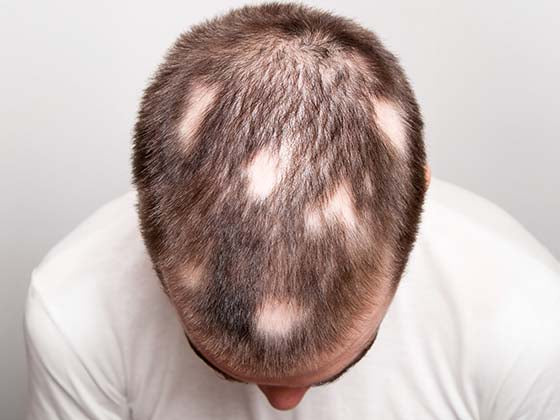Maintaining bone health is critical for women, as they are more likely to develop osteoporosis and other bone-related diseases, particularly after menopause. Detecting early indicators of bone health decline can help avoid serious problems. In this article, we'll look at major indications and prevention methods.
Understanding Bone Health: Key Functions and Importance

Bone health is important for overall health since it supports the body's structure, protects organs, and allows for movement. Understanding their critical functions and importance highlights why bone health should be a lifelong priority.
-
Structural support: Bones form the body's framework, supporting muscles, skin, and organs.
-
Movement facilitation: Bones, in conjunction with muscles, serve as levers for movement and physical activity.
-
Protection of vital organs: Bones protect vital organs like the spinal cord (vertebrae), heart and lungs (rib cage), and brain (skull).
-
Mineral storage and release: Calcium and phosphorus, two vital minerals, are stored in bones and released into the bloodstream when necessary to preserve equilibrium.
-
Production of blood cells: The bone marrow, particularly in long, flat bones, produces platelets, white blood cells, and red blood cells that are essential for clotting, immunity, and oxygen transport.
-
Storage of fat: Lipids, which can be converted into energy, are stored in yellow bone marrow.
-
Endocrine Regulation: Hormones like osteocalcin, which are produced by bones, control blood sugar and the accumulation of fat.
Why Bone Health Matters for Women

Bone health is particularly significant for women due to unique physiological and hormonal factors that make them more prone to bone density loss and conditions like osteoporosis. Understanding its importance helps women adopt preventative measures to maintain strength and mobility throughout life.
-
Higher risk of osteoporosis: Women have a fourfold increased chance of developing osteoporosis compared to men. Postmenopausal women face a dramatic reduction in estrogen levels, hastening bone loss.
-
Role of pregnancy and lactation: Insufficient calcium consumption during pregnancy may cause the mother's bone reserves to be depleted as the body prioritizes calcium for the baby's development. Although it is typically repaired after weaning, breastfeeding may potentially temporarily reduce bone density.
-
Menopause and bone density: As estrogen levels fall after menopause, bone resorption accelerates, exceeding new bone production. Bone loss over the first 5-7 years after menopause might be considerable, increasing fracture risk.
-
Impact on quality of life: Fractures from small falls are more likely to occur in those with weak bones, which can cause discomfort, decreased mobility, and in extreme situations, disability. In elderly women, hip fractures in particular have a significant morbidity rate.
-
Aging has cumulative effects: Women live longer than males, which prolongs bone loss and increases vulnerability to bone-related health concerns. Loss of bone density contributes to height loss, bad posture, and back discomfort in later life.
-
Cultural and nutritional considerations: Many women consume less calcium and vitamin D, either owing to food preferences or lifestyle choices, which can exacerbate bone health problems.
Role of Calcium and Vitamin D in Bone Maintenance

Calcium and vitamin D are vital minerals that work together to keep bones strong and healthy. Their roles in bone preservation are interrelated, and having an appropriate supply of both is critical for avoiding bone-related problems including osteoporosis and fractures. Calcium is the major mineral present in bones, and it helps to maintain their strength and structure.
Calcium
-
Calcium makes up 99 percent of the body's calcium stores and is what gives bones and teeth their hard, crystalline structure.
-
The process by which new bone tissue replaces old bone tissue is known as bone remodeling. Building new bone requires calcium.
-
Over time, bones deteriorate as a result of the body taking calcium from bones to maintain blood levels when dietary calcium is inadequate.
-
Women over 50 need 1,200 mg daily, while adults between the ages of 19 and 50 need 1,000 mg.
-
Sources are Dairy products include milk, yogurt, and cheese. Leafy greens include kale and broccoli. Fortified foods include plant-based milk and cereals. Almonds, tofu, and canned fish with bones
Vitamin D
-
Vitamin D facilitates calcium absorption and ensures proper bone mineralization. Without it, bones can become thin, brittle, or misshapen.
-
Vitamin D enhances the assimilation of calcium in the intestines, thereby guaranteeing that the body receives an adequate source of calcium from food.
-
Bone formation and repair depend on the balanced levels of calcium and phosphate, hence it helps to maintain them.
-
Vitamin D, in conjunction with parathyroid hormone (PTH), regulates calcium levels in the blood and bones.
-
Adults aged 19 to 70 require 600 IU per day, while those aged 70 and up require 800 IU per day.
-
Sunlight stimulates the skin's production of vitamin D. Foods include fatty fish (such as salmon and mackerel), egg yolks, fortified milk, and orange juice. Supplements are frequently required, particularly in regions with limited sunlight.
Hormonal Changes and Bone Health

Hormonal changes have a significant impact on bone health, especially in women, because hormones control the balance of bone formation and breakdown. Understanding these hormonal effects can help with the treatment and prevention of bone-related disorders.
-
Estrogen: It modulates osteoclast activity, which reduces bone resorption and increases bone production. Following menopause, estrogen levels plummet, resulting in rapid bone loss. This is one of the main reasons why women are more likely to develop osteoporosis after menopause.
-
Parathyroid Hormone (PTH): By promoting calcium release from bones when levels are low, PTH controls blood calcium levels. As in hyperparathyroidism, excessive PTH can result in a significant loss of bone density.
-
Calcitonin: Calcitonin, generated by the thyroid gland, regulates calcium levels by limiting bone resorption. It counteracts PTH to protect bone mass.
-
Vitamin D (Calcitriol): Vitamin D enhances calcium absorption in the gut and regulates calcium and phosphate balance for bone mineralization. Leads to soft, brittle bones (osteomalacia or rickets).
-
Testosterone: Promotes bone density by stimulating osteoblast activity (bone formation). Though present in smaller amounts, testosterone also supports bone health in women.
-
Cortisol: High levels of cortisol (stress hormone) can lead to bone loss by inhibiting bone formation. Chronic stress or long-term use of corticosteroids increases the risk of osteoporosis.
Identifying Symptoms of Bone Health Decline

Preventing serious diseases like osteoporosis, fractures, or persistent pain requires early detection of signs of bone health decrease. Although bone loss frequently goes unnoticed until a serious problem develops, several minor symptoms can serve as early indicators. Common signs of deteriorating bone health include:
-
Frequent Fractures: Bones that fracture easily, even from small collisions or falls, indicate weakened structure and density. The wrist, hip, and spine are all common fracture sites.
-
Persistent back or neck pain: This can be caused by vertebral fractures or thinning bones in the spine.
-
Height loss: A steady loss of an inch or more in height could suggest a spinal compression fracture.
-
Postural changes: A pronounced stoop or rounded shoulders may suggest spinal bone weakening or degeneration.
-
Weakened grip strength: Difficulty holding objects or performing tasks requiring hand strength may indicate a decline in musculoskeletal health.
-
Brittle nails: Fragile nails that break easily may indicate low calcium levels or poor bone health.
-
Reduced mobility or stiffness: Achy joints or reduced flexibility may indicate weakened bones and joints, which are often accompanied by inflammation.
-
Dental issues: Receding gums or loose teeth may indicate jawbone density loss, which is an early sign of osteoporosis.
Common Physical Signs of Bone Weakness

Bone weakening, which is frequently a precursor to more serious disorders such as osteoporosis, can present with modest physical symptoms. Recognizing these early indications is critical for timely action and bone health. Common physical indicators of bone weakness include recurrent fractures or injuries, persistent back discomfort, height loss, postural problems, joint pain or stiffness, brittle or weak nails, muscle weakness, receding gums, decreased grip strength, and fracture healing delays.
Recognizing Signs of Calcium Deficiency

Bone health can be significantly impacted by calcium shortage, as can many other bodily systems. The body reacts to low calcium levels by removing calcium from the bones, gradually weakening them. Early detection of calcium shortage symptoms can help avert more severe health issues. Bone-related symptoms, neurological symptoms, cardiovascular symptoms, skin and hair changes, dental difficulties, hormonal and menstrual abnormalities, and mood and mental health issues are all common symptoms that should be taken into account.
When to Seek Medical Advice

If you suspect calcium deficiency or experience symptoms related to declining bone health, it’s important to know when to seek medical advice. Early intervention can prevent severe complications such as osteoporosis, fractures, or hypocalcemia-related health issues.
When to seek medical advice for calcium deficiency such as frequent muscle cramps or spasms, numbness or tingling, bone pain or frequent fractures, dental issues, fatigue or lethargy, mood or cognitive changes, and heart palpitations or irregular heartbeats.
Factors Contributing to Bone Health Decline in Women

A combination of biological, lifestyle, and environmental factors can contribute to the decline in bone health in women. It is imperative to comprehend these contributors to take proactive measures to prevent osteoporosis and maintain robust bones. Hormonal changes, nutritional deficiencies, lifestyle factors, age, medical conditions, medications, genetic predisposition, and environmental factors are among the primary factors that contribute to the decline in bone health in women.
Age-Related Risks for Bone Loss

Age-related bone loss is a natural process, but it can be accelerated by factors like hormonal changes, lifestyle choices, and underlying health conditions. Biological changes and the cumulative effects of these factors over time render women particularly susceptible to bone loss as they age. Mitigating the effects of age-related bone loss can be achieved by comprehending the risks and implementing preventative measures.
-
Menopause and hormonal changes: Estrogen is required for the maintenance of bone density. The production of estrogen decreases significantly as women approach menopause, which usually happens around the age of 50. This hormonal change, which accelerates bone resorption, raises the risk of osteoporosis in the first 5 to 7 years after menopause. Reduced estrogen levels may cause bone loss of up to 20% in women over the first 5-7 years after menopause. After this era, bone density continues to diminish at a slower rate.
-
Reduced peak bone mass: Bone mass typically peaks in the late 20s to early 30s. After this age, bone density gradually decreases at a rate of about 0.3% to 0.5% per year. Women who had lower peak bone mass in their youth (due to insufficient calcium, Vitamin D, or physical activity) are at higher risk for significant bone loss as they age.
-
Decreased calcium absorption: Women's capacity to absorb calcium from meals falls with age. This fuels calcium shortage, which over time damages bones. Further contributing to bone loss include older persons' reduced appetite or trouble swallowing foods high in calcium.
-
Loss of muscle mass (Sarcopenia): Sarcopenia, or the loss of muscle mass and strength with age, is frequently associated with bone loss. Muscles are important in bone health because they stimulate bone remodeling through weight-bearing exercises. Weakened muscles limit physical activity, which exacerbates bone loss.
-
Slower bone remodeling: The ratio of bone resorption (breakdown) to bone creation is skewed in women as they age, with resorption exceeding formation. As a result, bone density gradually declines, which is a natural aspect of aging but raises the risk of fractures.
-
Chronic conditions and medications: Bone metabolism can be altered by diseases such as rheumatoid arthritis, diabetes, and kidney illness, therefore hastening bone loss. Diseases that compromise nutrient absorption, such as inflammatory bowel disease or celiac disease, can also cause weaker bones. Long-term corticosteroid, certain anticonvulsants, and proton pump inhibitor use can compromise bone health and raise osteoporosis risk.
-
Increased risk of falls: Age-related changes in vision, balance, and coordination increase the risk of falls, which can lead to fractures. Weaker bones and muscle loss make it more difficult to recover from falls, which is why fractures become more common with age.
-
Vitamin D deficiency: Aging skin produces a less effective synthesis of vitamin D from sunshine, which could cause a deficit. Given that calcium absorption depends on vitamin D, a shortage can seriously affect bone health—particularly in elderly persons.
Lifestyle Habits Affecting Bone Density

Lifestyle behaviors are critical in preserving bone density and preventing disorders like osteoporosis, particularly as we age. Adopting healthy practices can assist to strengthen bones, enhance bone health, and lower the chance of fractures. Nutrition, physical activity, smoking, alcohol intake, body weight, hormonal health, sun exposure, stress management, sleep hygiene, and fall and injury prevention are examples of lifestyle choices that have a direct effect on bone density.
Genetic and Medical Considerations

Although lifestyle modifications are important, underlying medical diseases and hereditary inclination can greatly affect bone quality. Knowing these elements will let people and medical professionals design specific plans to maintain bone density and stop fractures.
Preventive Steps for Maintaining Strong Bones

Maintaining strong bones necessitates a combination of proper nutrition, frequent physical activity, avoiding bad habits, and controlling medical disorders. By making preventative efforts early in life and maintaining these practices as you age, you may protect your bone health and lower your risk of fractures and other bone-related diseases.
















